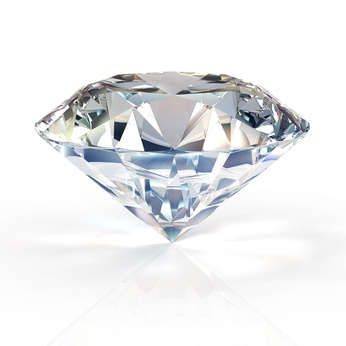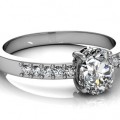How Jewelry Inspections Work
So what does a jewelry inspection usually involve? Most often, the jeweler will check how safe your items are, clean them, and polish them if you want.

Once a year is the absolute minimum for how often you should have your jewelry inspected.
Safety check: Checking the safety of your items is the main reason you should have your jewelry inspected.
The jeweler will check your setting for problems such as worn, bent or broken prongs.
Your stones will be examined to see if they are loose, and if they are, they will be tightened. Your items will be checked for worn and broken parts.
Cleaning: In addition to checking your jewelry for damage, the jeweler can also clean your items, removing dirt from places that you may not be able to reach at home.
Cleaning is good not only for the appearance of your jewelry but also for keeping it in good condition.
When dirt accumulates in your pieces, it can make them wear down faster because of the additional friction it causes.
Dirt can also hide broken parts of your jewelry and you may not know there is a problem until your piece falls apart.
Polishing: After your jewelry is checked and cleaned, it can also be polished. This is optional, and you should decide whether there is a need for it.
Keep in mind that if your jewelry is made of a softer metal such as gold or silver, you shouldn’t have it polished too often as this process wears off the metal’s outer layer.
And if your item is plated, polishing can remove the plating, and you may need to have the piece replated to restore its coating.
Why Are Jewelry Inspections So Important?
It is good to have your jewelry professionally inspected every once in a while as there may be problems with it that you are not aware of. You don’t want to wait until it’s too late as if your item falls apart while you are wearing it, you may lose your gemstones.
For example, worn prongs or other damage to your settings may make your stones loose and cause them to fall out. That’s why you should treat jewelry inspection as prevention of bigger problems that may occur down the road.
How Often Should I Have My Jewelry Inspected?
Once a year is the absolute minimum for how often you should have your jewelry inspected.
Of course, this also depends on how frequently you wear a certain piece: Items you wear very rarely don’t need to be inspected often.
Jewelry that you wear regularly, however, should be checked at least two or three times a year.
It is also a good idea to have a piece of jewelry checked after you’ve bumped it hard: You never know which part of it may have bent or broken because of the hit.














